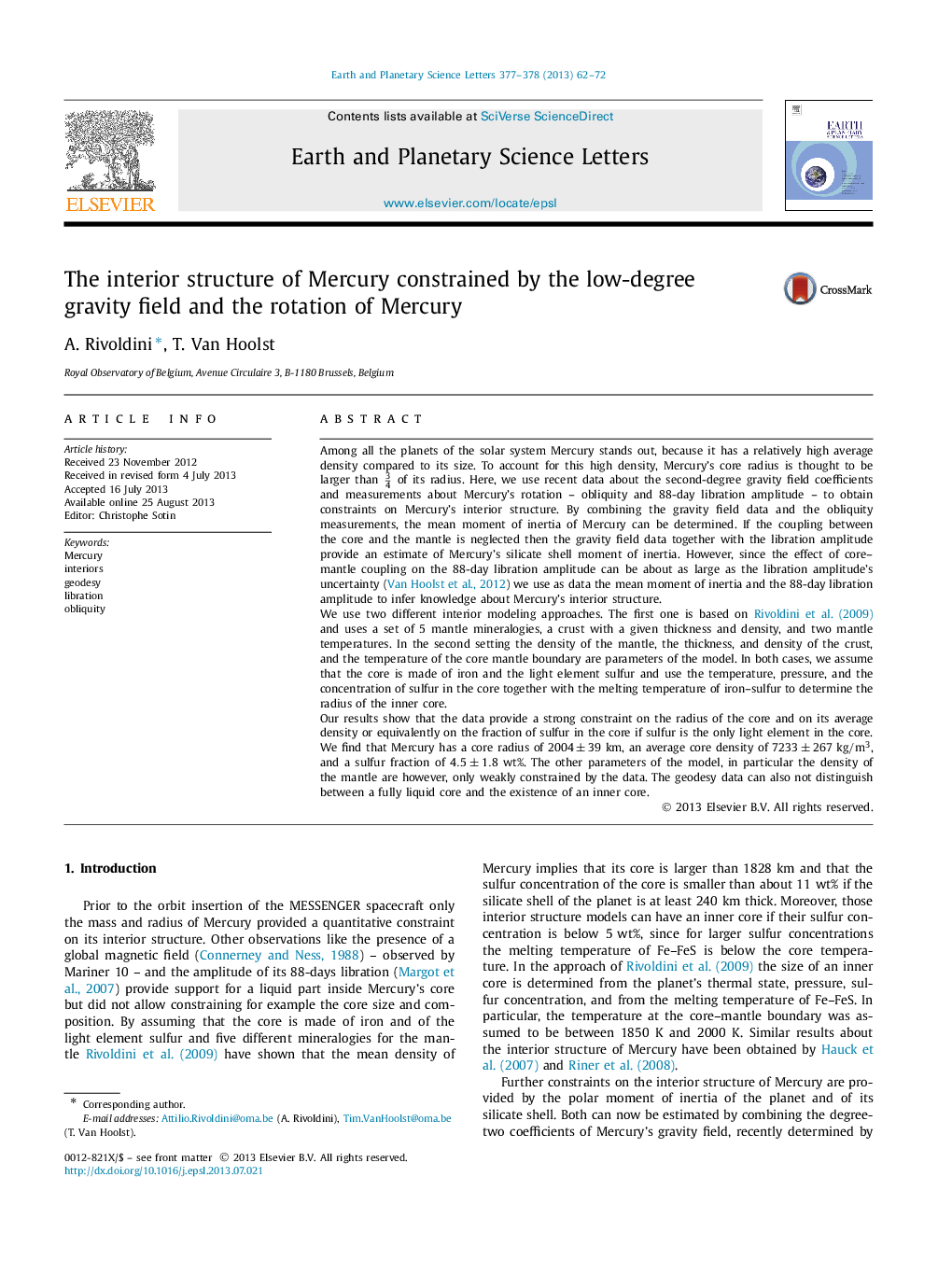| Article ID | Journal | Published Year | Pages | File Type |
|---|---|---|---|---|
| 6429996 | Earth and Planetary Science Letters | 2013 | 11 Pages |
â¢Low-degree gravity field and rotation data provide a strong constraint on Mercuryʼs core radius.â¢The effect of a gravitational-pressure coupling between the core and the mantle on the core radius estimate is small.â¢Mercuryʼs core radius is 2004 39 km.â¢The geodesy data cannot distinguish between a fully liquid core and the existence of an inner core.
Among all the planets of the solar system Mercury stands out, because it has a relatively high average density compared to its size. To account for this high density, Mercuryʼs core radius is thought to be larger than 34 of its radius. Here, we use recent data about the second-degree gravity field coefficients and measurements about Mercuryʼs rotation - obliquity and 88-day libration amplitude - to obtain constraints on Mercuryʼs interior structure. By combining the gravity field data and the obliquity measurements, the mean moment of inertia of Mercury can be determined. If the coupling between the core and the mantle is neglected then the gravity field data together with the libration amplitude provide an estimate of Mercuryʼs silicate shell moment of inertia. However, since the effect of core-mantle coupling on the 88-day libration amplitude can be about as large as the libration amplitudeʼs uncertainty (Van Hoolst et al., 2012) we use as data the mean moment of inertia and the 88-day libration amplitude to infer knowledge about Mercuryʼs interior structure.We use two different interior modeling approaches. The first one is based on Rivoldini et al. (2009) and uses a set of 5 mantle mineralogies, a crust with a given thickness and density, and two mantle temperatures. In the second setting the density of the mantle, the thickness, and density of the crust, and the temperature of the core mantle boundary are parameters of the model. In both cases, we assume that the core is made of iron and the light element sulfur and use the temperature, pressure, and the concentration of sulfur in the core together with the melting temperature of iron-sulfur to determine the radius of the inner core.Our results show that the data provide a strong constraint on the radius of the core and on its average density or equivalently on the fraction of sulfur in the core if sulfur is the only light element in the core. We find that Mercury has a core radius of 2004±39 km, an average core density of 7233±267 kg/m3, and a sulfur fraction of 4.5±1.8 wt%. The other parameters of the model, in particular the density of the mantle are however, only weakly constrained by the data. The geodesy data can also not distinguish between a fully liquid core and the existence of an inner core.
